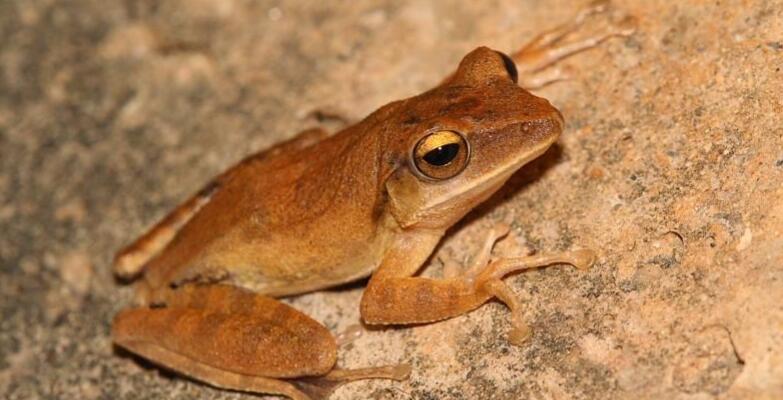Qinling Mountains are the geographical divide between China’s north and south. It is the natural boundary separating the subtropic monsoon climate and the temperate monsoon climate. This specialized geographical region creates a natural barrier that ensures the preservation and maintenance of ecosystems.
Alongside the giant panda, golden monkey, takin and crested ibis, there are a substantial number of amphibians in the region, including the Tsinling tree toad.
Amongst those studying amphibians images regarding Tsinling tree toad are very rare. In 2010 while I was taking pictures in the field I stumbled upon the Tsinling tree toad. In 2011 and 2012, I came upon and studied it in the wild. These three meetings have provided me with the opportunity to understand its physical characteristics, behaviors and habitat.
The Tsinling tree toad is a native species to China, distributed only across the Qinling Mountains. In the Gansu and Hubei region it has a very scarce population, but is widespread in other locations. Samples of the frog were collected in Hui County and Tianshui in Gansu in July 1964 and July 1979. But it has not been filmed in the wild for years.
Tsinling tree toad lives near the alpine paddy fields or in waters that are about 1,500 meters above sea level. It is heavily reliant on its environment for its survival. Its habitat is ideally close to a water source, surrounded by grass, bushes or wetland. Tsinling tree toad is about 4 centimetres long. The ends of its toes expand into suction cups allowing it to easily hold onto delicate leaves and grasses. The Tsinling tree toad preys on grasshoppers, aphids, mosquitos, flies and other small insects. What distinguishes it from the Hyla annectans is the stripe at the tip of the Tsinling tree toad’s nose that is continious and looks like the letter “Y”.
Due to the common appearance of the Tsinliong tree toad, it has not been considered or placed under protective status. Nowadays their numbers are steadily declining due to this and other factors. The extinction of the Tsinling tree toad is quickly becoming a reality.























